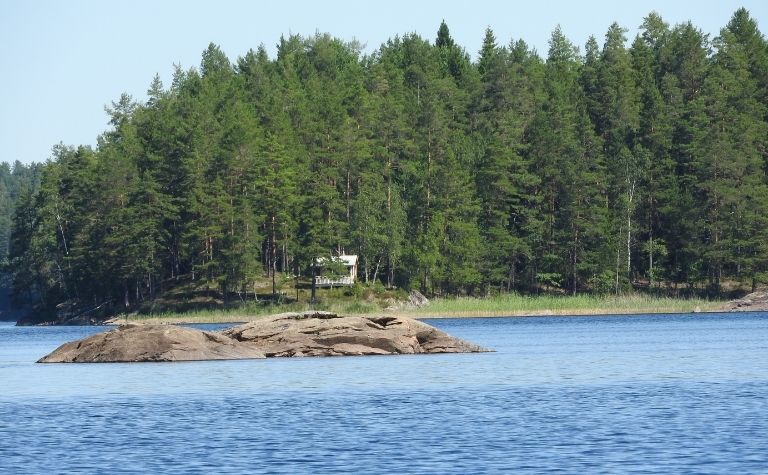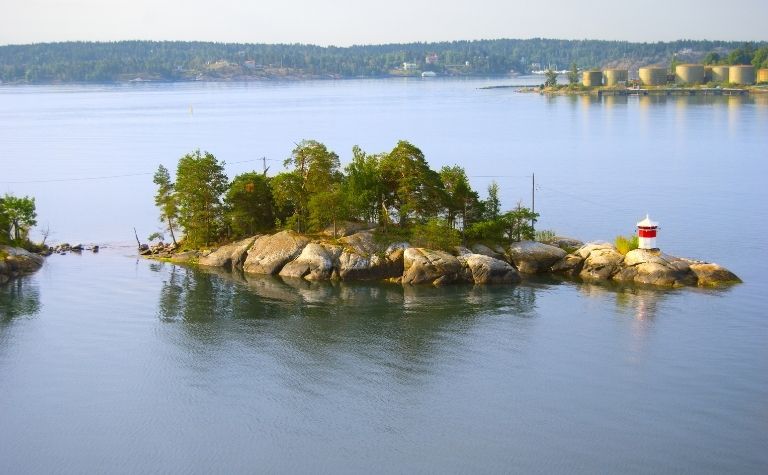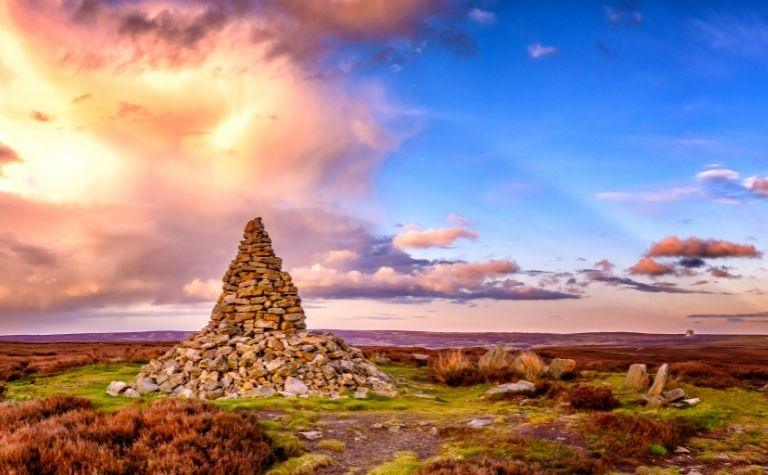Sweden is one of the most beautiful countries in the world. Its stunning landscapes and seascapes lure travelers from around the globe.
One geographical feature that Sweden is known for is having a lot of islands. Many people wonder why this is.
Sweden has thousands of islands for two primary reasons. First, the islands are the result of the ice age.
The presence and eventual retreat of glaciers helped shape the land, sea, and islands of Sweden.
Second, Sweden owns the islands as a result of winning historical boundary disputes with neighbors.
How many islands does Sweden have? How did Sweden come to possess so many islands? What are Sweden’s islands like? Which Swedish islands are the largest?
Keep reading to learn the answers to these questions and others.
Also see Why Does Sweden Have So Many Lakes? to learn more.

How many islands does Sweden have?
The number of islands included in Sweden’s borders has always been contentious. There are different ways to define an “island” in relation to its size and location.
The official Swedish research concluded that there are 221,831 islands, while the official European definition results in Sweden only having 24 islands.
Many third-party associations, like the World Atlas, corroborate the higher number:
“Sweden has approximately 221,831 islands, although only about 1,000 of them are inhabited.
In fact, the combined area of Sweden’s islands is bigger than its mainland. Sweden tops the list of countries with the highest number of islands.” [1]
The Reasons Sweden Has So Many Islands
There are two reasons why Sweden has so many islands:
- Geological
- Political
Also see Sweden Death Metal vs Norwegian Black Metal to learn more.
The Geological Reasons Sweden Has So Many Islands
Sweden and Norway’s bedrock consists of igneous rocks formed a long time ago.
Some geologists speculate that Scandinavia, including Sweden, was much closer to the equator prior to continental drift.
Some suggest that Sweden’s coral reef island is a legacy of its equatorial origins.
If this theory is correct, then Sweden’s shallow waters were once home to sponges and corals that thrived in tropical latitudes.
Huge carbonate sheets similar to those in the Bahamas eventually developed.
The carbonate sheets and sponges were the building blocks of the reefs and islands.
Global temperatures decreased during the ice age, and parts of the world became a frozen wasteland.
Massive ice sheets shaped the Swedish landscape that covered the land and the ocean around Sweden.
As the ice settled, the magma found under the earth’s crust was displaced. The result of this movement was that landmasses, including islands, sank downwards.
The ice age ended around ten thousand years ago when the earth began warming and the ice melted.
Once the massive weight of the ice sheet was lifted, the land slowly began to rise. Scientists report islands in this region are still rising today.
They predict that there will be further upliftment of land for the next thousand years.
Sweden and its surrounding islands are rising by 2-4 millimeters per year. As the land rises, more islands are being revealed, and the existing islands are growing in size.
Also see What Do Swedes Think of Americans? to learn more.
The Political Reasons Sweden Has So Many Islands
Fossil records reveal that Scandinavia, including Sweden, was first populated between 8,000 and 6,000 B.C.
Sweden is one of the areas of Northern Europe from which the Vikings launched their exploring, pillaging, and trading along the Baltic Sea and into present-day Russia. The Viking Age occurred between 800 and 1050 A.D.
The first formal written historical record of Sweden can be traced back to the 14th century.
Before this, there were references made to Sweden by people that lived outside the area. Scholars generally agree that the official history of Sweden only started in the 11th century.
Although the individual provinces had started to unite in 1,000 A.D., it wasn’t until the 13th century that the monarch started to exercise control.
In 1280 King Magnus Ladulås (1275–90) authorized the establishment of nobility and organized society based on the feudal model.
In 1389 Denmark, Norway, and Sweden merged and formed the Kalmar Union. All three Scandinavian countries were eventually organized under a single monarch.
The union was damaged by a series of conflicts that resulted in the Stockholm bloodbath in 1520. 80 Swedish members of the nobility were executed at the instigation of the Danish King.
It led to a coup where Gustav Vasa, a Swedish nobleman, seized power and deposed the Danish King Kristian II.
With the dissolution of the Kalmar Union, Sweden’s official policy was to gain control over the Baltic Sea, which was the motivation behind the frequent wars with Denmark.
Sweden conquered Denmark in 1658, which resulted in Finland, provinces in Northern Germany, and the present-day Baltic republics all belonging to Sweden.
How Did Present Day Sweden Begin?
Between 1708 and 1721, Denmark, Poland, and Russia combined forces and defeated Sweden, which reduced the land to roughly the same area occupied by current-day Sweden and Finland.
In the Napoleonic era, Sweden surrendered Finland to Russia, and Norway was forced to join Sweden in 1814.
This union was peacefully dissolved in 1905, resulting in present-day Sweden and its islands falling within the national border.
Also see Why Does Sweden Have So Many Billionaires? to learn more.

What Are Sweden’s Islands Like?
Not all of Sweden’s islands are “islands” in the traditional sense, as some are merely outcroppings of rocks.
If the tiny rock outcrops and islets are removed, Sweden only has 24 islands large enough to sustain human populations.
In 2001, Sweden commissioned a study to declare how many islands it has officially. The commission found 221,831 islands, with some as small as 25 m2 and the majority smaller than 1000 m2. Only 593 were more extensive than 1 km2.
While just over 8,000 of the islands have a structure built on them, only 984 are populated all year round.
Swedes have a generic word for islands: the single letter ö, pronounced as /ɵ/. The easiest way to say the phrase ö is to speak the letter “a” as in the word “may” but with the lips shaped like an “O.”
The tiniest islands are just rocky outcrops, and in Swedish, these are called “Kobbe,” which translated to English means:
- Rock
- Islet
- islet rock
The next size up is called “Holme,” which means:
- small island
- small islet
- An area of land surrounded by water
The number of official islands belonging to Sweden reduces to just 24 if the European definition of an island is applied. The definition is:
- The “Island” must be at least 1km2 in size.
- It must be situated further than 1km from the nearest landmass.
- It must not be permanently connected to the mainland
- It must have more than 49 inhabitants
- It must not house the capital of a European Union member.
Sweden has an enormous number of “islands” that range from tiny rocky outcrops to full-sized inhabited land.
Also see Do Swedes Avoid Conflict? to learn more.

What Are the Largest Islands In Sweden?
The largest islands in Sweden are:
- Gothland
- Öland
- Orust
- Hisingen
- Värmdö
- Tjorn
- Väddö
- Björkö
Does Sweden Have the Most Islands In The World?
At 221,831, Sweden has the second largest number of any country globally. The only country with more islands than Sweden is Norway which has 239,057 islands.
Also see What Do Swedes Think of Norwegians? to learn more.
